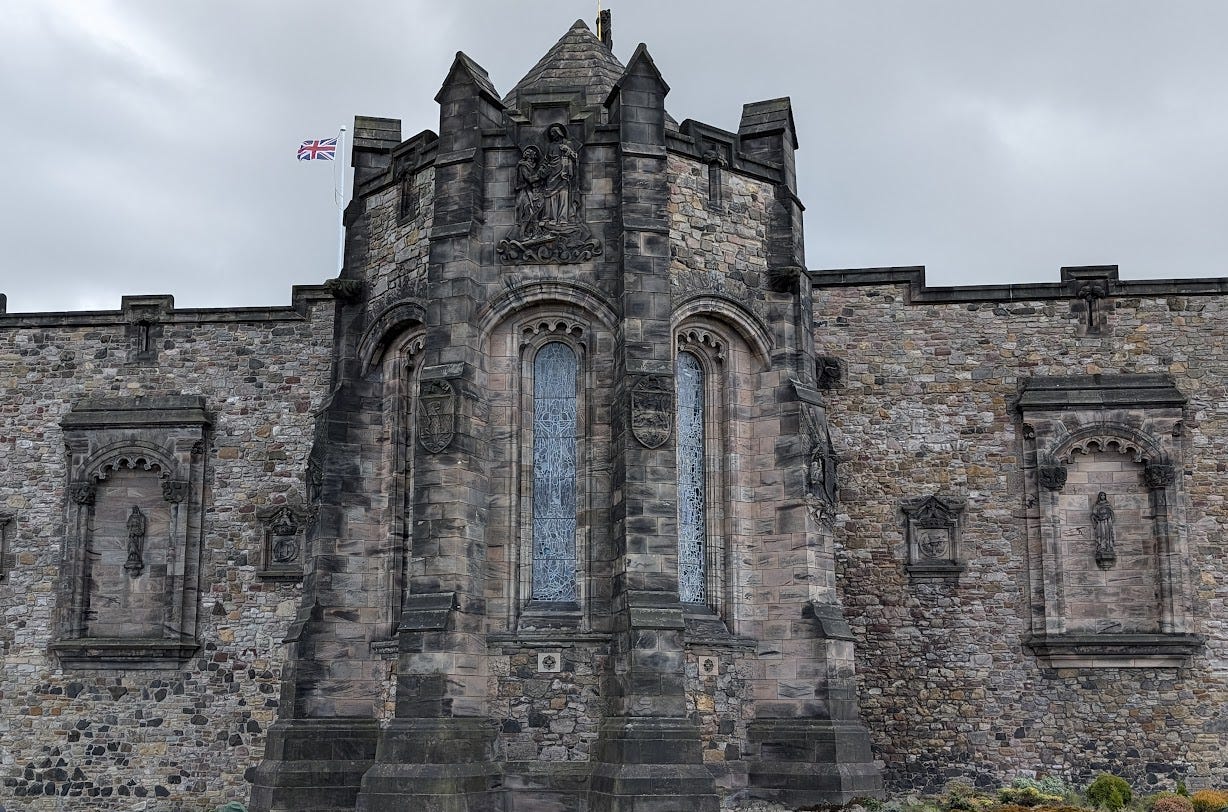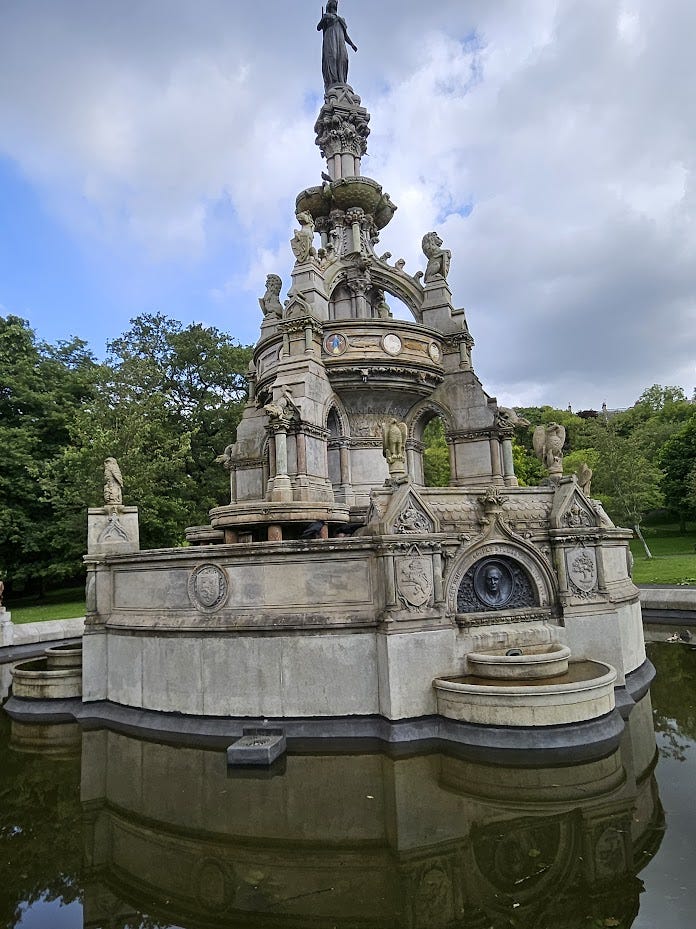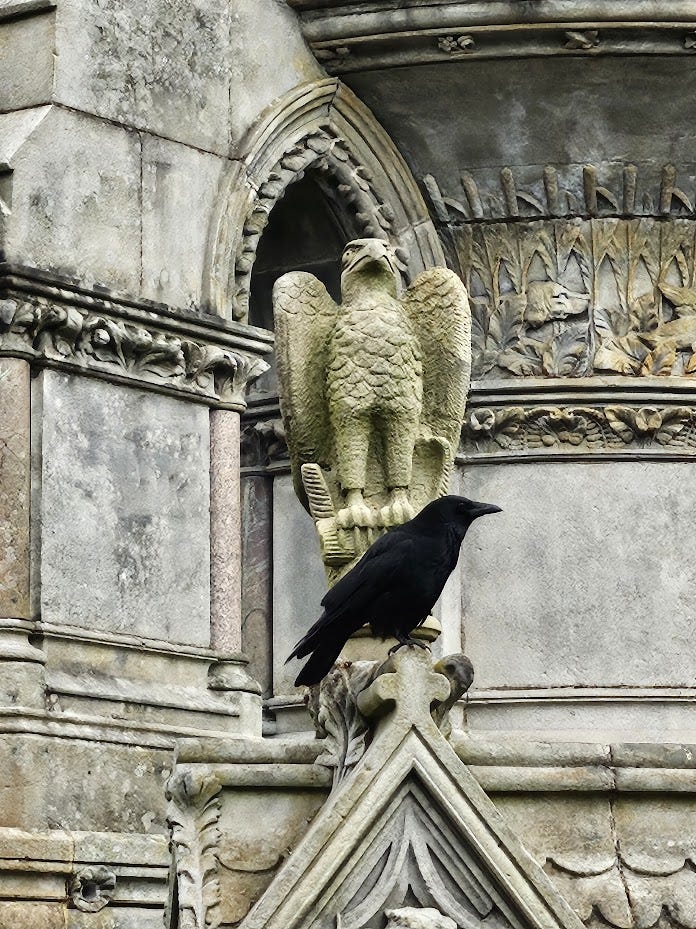
Scotland is often gray, or maybe it’s grey. England can be gray, but the Scotland we recently inhabited is really gray, especially if you’ve just come from sunny Italy. Gray rainy skies, beautiful gray stone buildings, dirty with the soot from a gritty Industrial Revolution that paved the way for the country’s greatness.
We trained into Glasgow from Edinburgh, and into the land of Lord Kelvin, the nineteenth and early twentieth century Scottish physicist who spent his working life at the University of Glasgow. We walked through Kelvingrove Park and over the River Kelvin on the Kelvinbridge and down Kelvin Way. But Kelvin was only one of the many Scottish inventors and scientists we met along our travels. James Watt and Daniel Rutherford top a long list that includes Alexander Graham Bell, the Scottish inventor who moved to North America for his health and just happened to be in Boston when he invented the telephone. The Scots claim him, though.
It was in Kelvingrove Park, the wonderful Victorian garden in Glasgow where we saw the park’s centerpiece, the great Stewart Memorial Fountain. What makes the fountain special is that it does not memorialize a war or the Fallen Dead or Queen Victoria or any commonly celebrated person or event in the life of a nineteenth century Scot. It was erected in 1872 by the city Water Commissioners, in honor of the man who brought water to Glasgow.
The fountain’s a Victorian excess, with a little bit of this and that thrown into the design to satisfy all the judges for the competition, I suspect. On the top is a bronze Ellen Douglas, central character from Sir Walter Scott’s poem The Lady of the Lake. Just below are the names of the four lochs tapped for the water flowing to Glasgow. Below that we see the crests of Scotland and Glasgow in front of a crown (or perhaps four flying buttresses). Below that are zodiac symbols, and then birds and fish sculpted in full or bas relief, representing the wildlife of the lochs. Then, at eye level we see the clan symbols of the Stewarts and others who were instrumental in completing the project. This is simply an overview. For more detail you can read this wonderful eccentric brochure put out by the Glasgow City Council.
Why all the fuss and bother? The fountain represents the story of the Scottish industrial revolution. The mechanization of repetitive tasks through mechanical power was a tremendous engine of innovation and social change. It was also the beginning of truly horrific urban blight. Hand in hand with the urban industrial revolution came the agricultural revolution, which included Enclosure (or Inclosure), where landlords removed tenant farmers to create larger fields, able to be plowed and reaped more efficiently through modern machinery. Displaced families who for generations had only known farming streamed into cities, crowding and clogging already inefficient public water and sewer systems. The Irish, fleeing starvation in the late 1840s, landed in many places around the world, including Glasgow at that time.
Glasgow was and remains on the River Clyde, which was not only the city’s main water source but home to a vibrant shipbuilding enterprise. At one point a quarter of all ships on the sea were built in Glasgow. By the early nineteenth century the river was polluted from shipbuilding and raw sewage, and those who were able got their water from upstream. Wells were dug around the city, but there were never enough to meet the needs of the population, and residents had to wait hours to draw their water. As you might imagine, cholera and typhus were constant companions of the poor.
At the same time air quality was bad and getting worse. Again, those who were able moved west of the city to catch the westerly ocean breezes. Thus, Kelvingrove Park and the lovely housing that was developed there in the mid-nineteenth century. But not everyone can live upstream, or to the west. A plan was hatched to draw water from four lochs some thirty miles away, through mountains and across valleys. Dams were built, tunnels dug, aqueducts created. City fathers claimed the works “rivaled Roman engineering,” and, sure enough, it was really quite impressive. Queen Victoria, summering in Balmoral a few miles away, traveled by carriage and ferry to the head of the works to officially and ceremonially open the floodgates. Telegraph messages signaled the news in Glasgow, where cannons boomed out over the city, announcing that fresh water was finally flowing down from the lochs.
The 1859 waterworks still supplies Glasgow with fresh water from clear mountain lochs. Stewart’s job was to shepherd the whole complicated process, which came in over budget (of course) and late. He was the bureaucrat in charge, but sadly died before completion. A grateful city honored him with a fountain anyway.






Glasgow is a really cool place to explore. Mary's family has deep roots there: her great-great grandfather attended the university and then went on to preach in nearby East Kilbride for over 5o years.
If you are a fan of bagpipes, then be sure to check out the Piping Center. Years ago we did a guided tour there. We learned about bagpipes from around the world, but more importantly we got to try our hand at actually playing different sets of bagpipes. We learned it is harder than in looks, the larger sets weigh more than you'd think, and even figuring out how to hold all the parts is a puzzle.
Hope you saw the floral clock in Edinburgh. There's a wonderful BBC video showing how the gardeners put in all the plants using a very long extension ladder.
Your blog is a welcome diversion to so many other things happening right now. I really enjoy your thoughtful writing about the places you are seeing.
Really interesting. What a fountain!!! Love that the zodiac signs are included. And the plethora of other decorative bits and babs.
FYI ...
Just noticed when reading up on Harrogot that it has a Turkish Bath?